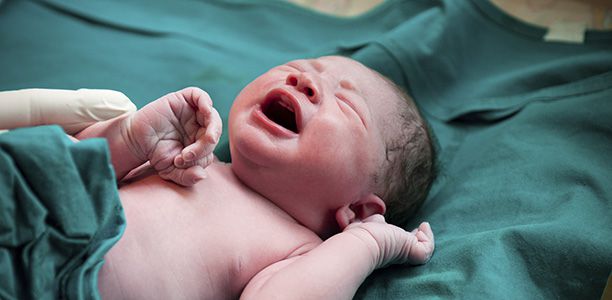Queensland women have higher odds of having a caesarean section than women of similar age and health in England, QUT’s Dr Yvette Miller has found.
Dr Miller from QUT’s IHBI (Institute of Health and Biomedical Innovation) said Queensland women had a 1.4 times the odds of having a caesarean, and 1.5 times the odds of having a planned caesarean (before labour starts), than women in England.
The findings are from cross-country research conducted with researchers from The University of Oxford, England, and the Queensland Centre for Mothers & Babies at The University of Queensland, just published in the BMC Pregnancy and Childbirth journal.
“In Queensland 36% of women gave birth by caesarean while in England 25% of births were by caesarean,” Dr Miller said.
“Women who had had a caesarean before had more than double the odds of having another caesarean if they lived in Queensland, compared with women in England.
“The most common reason for having a planned caesarean in Queensland and England was that the woman had previously given birth by caesarean. But Queensland women are more likely to have a caesarean on these grounds than those in England, meaning that fewer women are having a vaginal birth after caesarean, also known as a ‘VBAC’.
“Women in Queensland were also more likely than women in England to have a caesarean after their labour had started.
“The reasons cited were failure to progress in labour, premature labour, a previous caesarean or concerns about the mother’s health, whereas in England, foetal distress and failure of the labour to progress were the most cited reasons.”
Dr Miller said differences in the practices of those caring for women through labour and birth could account for the discrepancy in rates between England and Queensland.
“In England, more than half of pregnant women – 56.3% – are cared for primarily by a midwife during labour and birth. In Australia, fewer than 44% of women are cared for primarily by a midwife.
“Our previous research has found that Queensland women who birth in the private sector are more likely than women in the public sector to have a caesarean section, and these differences are not attributable to risk factors or women’s preferences.”
Dr Miller said the study was one of the first to compare reasons for varying caesarean rates in different countries in the same time period.
“Queensland has one of the highest rates of caesarean birth in Australia and it is important to find the drivers of the increasing numbers of caesareans as they are not without risk.
“In many circumstances, caesarean section can place women and their babies at increased risk of complications or death at the time of birth and can have negative implications for future pregnancies and the mother’s health,” she said.
“Furthermore, caesarean births cost the health system a lot more money.”
Dr Miller noted that both countries had similar guidelines emphasising the importance of respecting the birth preferences of women with a previous caesarean at the time the study was done. However, these guidelines were much newer in Queensland than in the UK.
“These new Queensland guidelines represent a large departure from the previous guidelines, which suggested that birth decisions were to be guided by clinical expertise rather than the woman’s birth preferences.
“Delays in the adoption of these guidelines in Queensland could also explain some of the differences we found, but we have yet to see if women’s preferences being taken into account have an effect on the rate of subsequent caesareans.
“The majority of women in Queensland say they would prefer to have a vaginal birth.”
(Source: QUT, BMC Pregnancy and Childbirth)










